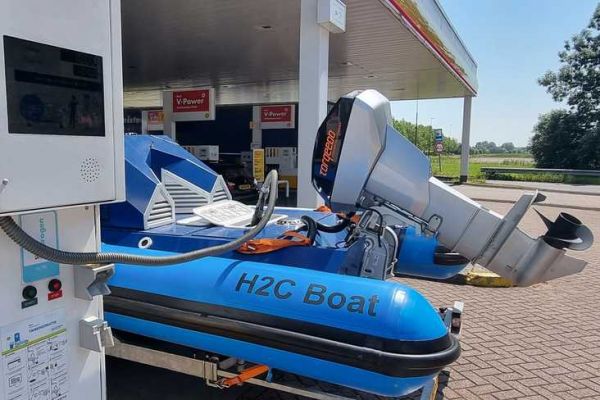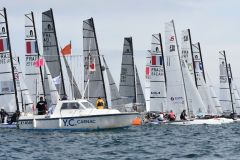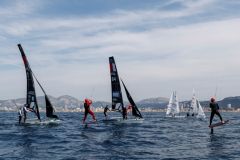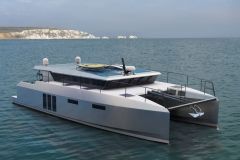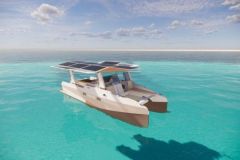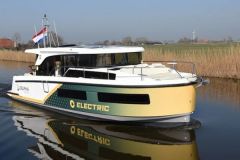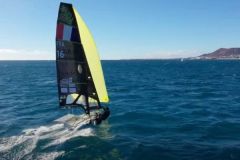A hydrogen-powered RIB
The H2C Boat is part of a project called Zephyr, designed to demonstrate the viability of green hydrogen for maritime use in the Netherlands. It was launched by a consortium comprising the Dutch Water Sports Association, the University of Delft, the integrator De Stille Boot and the Habbeké Shipyard, supported by various partners.

This is a 6.8 m aluminum-hulled semi-rigid. Equipped with a 50 kW Torqeedo Deep Blue outboard motor, the boat adds a 51 kWh hydrogen fuel cell to a 40 kWh lithium battery pack. Loaded displacement is announced at 1,100 kg.
Following trials, the manufacturers have announced a maximum speed of 25 knots. The fuel cell, which acts as a range extender, extends the range, enabling the H2C Boat to cruise for 5 hours at a cruising speed of around 6 knots.
While the RIB remains functional, the space required for the hydrogen fuel cell is nevertheless considerable for such a small boat.
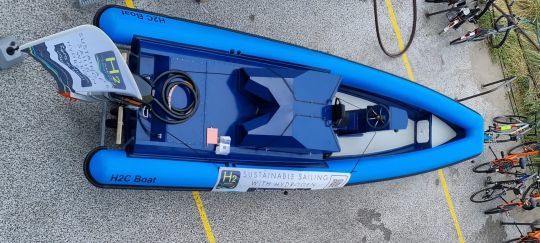
Specifications adapted to a wide range of sailing conditions
The H2C Boat was born in the mind of Jaap Zielhuis, Dutch Olympic coach during the World Championships in Denmark. At the time, he identified the potential of race organization boats for the use of electric motors and hydrogen fuel cells. 5 years later, it was at these same world championships in the Netherlands that the boat demonstrated its capabilities, the autonomy corresponding to this use, as Marcel Schaap, founder of De Stille Boot, points out: "The presence of hundreds of coaching boats at the world championships shows the potential of this project in reducing the carbon footprint of sailing events."
